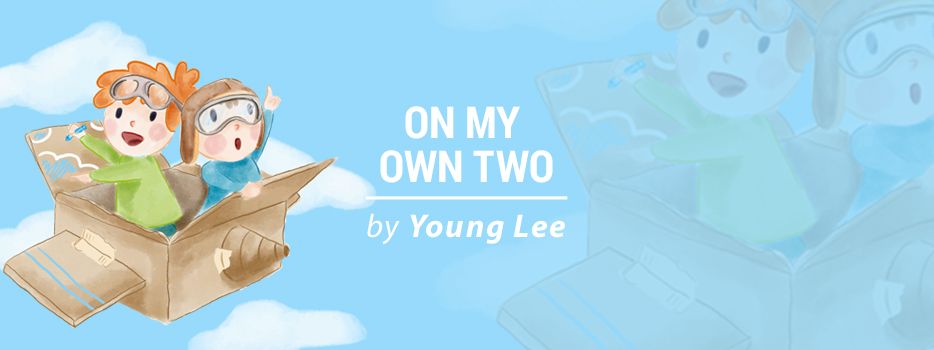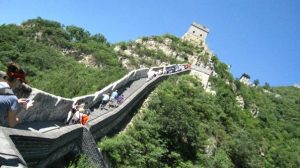Remembering to Appreciate My Legs
Written by |

My Chinese professor in college once told my class that according to popular belief, a person who hasn’t been to the Great Wall of China cannot yet call himself a man (or woman).
When I was there, as part of a college study abroad program, I think I lasted about half an hour on the wall before my ankle slipped on one of the steps and caused my right knee, which had just healed from a hyperextended tendon, to give out on me.
With an ankle in pain and an unsteady knee, I had to give up on any goal I might have had of seeing much more of one of the world’s great wonders. I ended up spending much of that day on the Great Wall, in a little out-of-the-way nook, watching other tourists pass me by.
It’s been a while since then, but as I was gazing at my legs a few days ago while sitting in bed, they reminded me of that experience, and others like it, that make up my unstable relationship with my legs.
Indeed, when I look at them, the memories that often come to mind aren’t always cheerful — they’re frustrating. I suspect such thoughts are common when managing a condition like Charcot-Marie-Tooth disease, which often results in weakened ankles and legs, among other symptoms.
Looking at my feet, I reflexively think of stubbed toes, numbness, and growing calluses. I see my ankles and I think of trips and falls during gym class and comments about my gait. My calves remind me of ankle-foot orthoses, middle school friends joking about my “low hops,” and being incomprehensibly slow compared with my classmates when I was in kindergarten.
Surrounding myself and getting in a bit of a festering mood comes naturally to me. I recognize it’s not a good thing.
I’m reminded of a story I recently heard from Bethany Meloche, a member of the Charcot-Marie-Tooth Association (CMTA) advisory board and author of “How Should a Body Be?”
As a guest on an episode of “He Walks Like a Cowboy,” a podcast produced by CMTA youth program manager Jonah Berger, Meloche talks about a recent event that reminded her that although many CMTers may believe that we have “bad legs,” we ought to occasionally look back at the good things our legs have afforded us.
When I listened to that episode, I realized I really do need to remember to think better of my legs.
I need to remember to tell myself every now and then that although I have my challenges, my legs are good, not bad. My legs have helped me go to many places that have helped me grow and become a better person.
Although I may not have been able to see much of the Great Wall, for goodness sake, at least I got to go!
Because of my legs, I got to hike a bit in various cities in China, and beneath the Grand Tetons in the U.S. I get to enjoy nature along the many trails of my home state of North Carolina, thanks to my legs. And although I’m a terrible dancer, I’ve used those legs that I’m so frequently frustrated with to dance at nightclubs and on the tables of karaoke bars with careless abandon.
So, when I look at my legs these days, I still find it much easier to remember the frustrations they have caused me. But I hope to never forget the many great steps I’ve taken, and the many possibilities I have yet to explore.
***
Note: Charcot-Marie-Tooth News is strictly a news and information website about the disease. It does not provide medical advice, diagnosis, or treatment. This content is not intended to be a substitute for professional medical advice, diagnosis, or treatment. Always seek the advice of your physician or other qualified health provider with any questions you may have regarding a medical condition. Never disregard professional medical advice or delay in seeking it because of something you have read on this website. The opinions expressed in this column are not those of Charcot-Marie-Tooth News or its parent company, Bionews, and are intended to spark discussion about issues pertaining to Charcot-Marie-Tooth.






Lynn Wolff
I relate to this story and certainly am very grateful for the incredible life experiences that my legs have guided me through. I too had difficulty on the China wall; however, a wonderful guide and my husband insisted that I not quit and we made it together. Of course it took us most of the day to go up and then back down.
I have seen much of the world with an AFO (Ankle foot orthotic), special shoes, and sheer determination.
Thanks Young Lee for your great article.